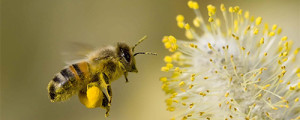Climate change is no longer that looming threat on the horizon. It is here and the changes are happening now. So, in the gardening world there is much discussion about how to use gardening to help prevent loss of habitat, declining insect and bird populations, and how to slow the inevitable changes to ecology.
It is clear now that every effort we make to plant native trees, shrubs and wildflowers can go a long way to help. Here’s how. Firstly, native plants support insects by providing a food source both in their leaves and their nectar. They also provide a home for birds and the insects living in native plants feed birds. Natives do this better than any other plants. Natives also interact with their environment and other plants in ways that have been established over centuries to create symbiotic interactions with others, so that they contribute to a highly orchestrated web of life that we are only beginning to understand. But what is a native? Doug Tallamy, horticultural researcher and author of the book Bringing Nature Home, defines a native as “a plant that has evolved in a given place over a period of time sufficient to develop complex and essential relationships with the physical environment and other organisms in a given ecological community. “

Tallamy, Douglas W. Bring Nature Home:How Natve Plants Sustain Wildlife in Our Gardens. Timber Press, 2007.
Tallamy offers guidance for gardeners when choosing natives, encouraging us to avoid double flowers and sterile cultivars that do not support wildlife and focusing on species plants. He also has shown that variegated and purple leaved plants do not support wildlife as well as green leaves. In the interest of supporting pollinators, we need to move beyond thinking of our gardens simply as places we want to make attractive and begin to also consider how plants work together and support life. Ideally, we want to meet all of these goals in order to have a garden both beautiful and brimming with life in balance.
Some suggestions for native plants in Ontario include chokeberry, red columbine, oak, goldenrod, Joe Pye weed, sunflowers, beebalm, milkweed, vervain, asters, red cherry trees, witch hazel, and many more. A good online source is Ontario Native Plants at onplants.ca.
Bee balm is a good native plant choice for your garden.
Here’s to spring and a new season of growth not only in our yards but also in our thinking about how we approach our gardens as part of the wider world and begin to learn that we belong to it, not it to us.
authored by Tanya Crowell

